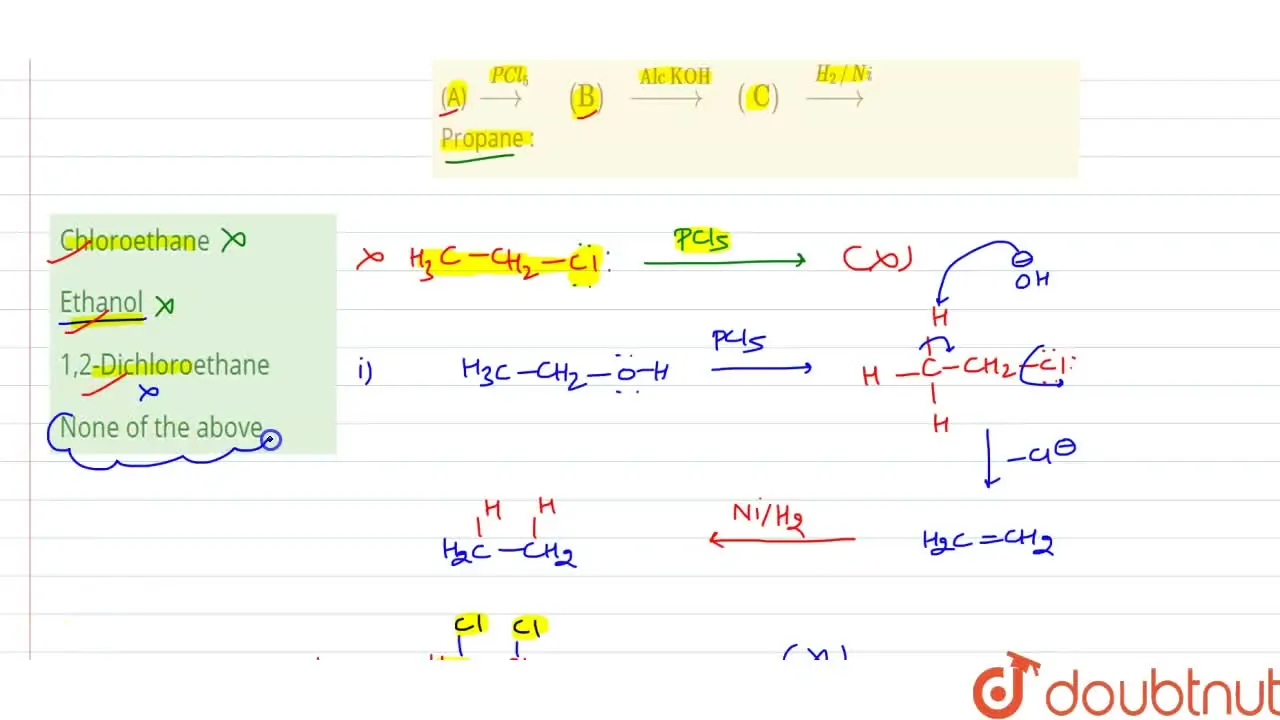The compound (A) in the following reaction sequence is:
(A) PCl5−−→ (B) Alc KOH−−−−→ ( C) H2/Ni−−−→
Propane :
Chloroethane
Ethanol
1,2-Dichloroethane
None of the above
The correct Answer is:D
Step by step video & image solution for The compound (A) in the following reaction sequence is: (A) overset(PCl_(5))(rarr) " (B) " overset("Alc KOH")(rarr) " ( C) " overset(H_(2)// Ni )(rarr) Propane : by Chemistry experts to help you in doubts & scoring excellent marks in Class 12 exams.
Related Playlists
- BOOK - VMC MODULES ENGLISHCHAPTER - HALOALKANES & HALOARENES EXERCISE - ENABLE99videos
HALOALKANES & HALOARENES
- BOOK - VMC MODULES ENGLISHCHAPTER - HALOALKANES & HALOARENES EXERCISE - EFFICIENT100videos
HALOALKANES & HALOARENES
- BOOK - VMC MODULES ENGLISHCHAPTER - ENVIRONMENTAL CHEMISTRYEXERCISE - JEE Main (Archive)39videos
ENVIRONMENTAL CHEMISTRY
- BOOK - VMC MODULES ENGLISHCHAPTER - HALOALKANES AND HALOARENESEXERCISE - IN-CHAPTER EXERCISE - F6videos
HALOALKANES AND HALOARENES
Similar Questions
Compounds A, B and C in the following reaction sequence are:
C2H5BrAgCN−−−→AH3O+−−−→ B + CView SolutionThe final product (Y) of the following reaction is:
C2H4Br2−−→ X Ph3SnH−−−−→ YView SolutionSOCl2−−−→(A)KCN−−→(B)H+−−→(C ), the compound (C ) is
 View Solution
View SolutionIn the following reaction sequence :
R−OHP+I2−−−→R−IAgNO2−−−→RNO2HNO2−−−→ no reaction.
The alcohol is a :View SolutionIn the following sequence of reactions,
CH3CH2CH2BrKOH(Alc)−−−−−−→ (A) HBr−−→ (B) KOH(aq)−−−−−→ (C ) The product (C) isView SolutionComplete the following reactions :
C2H5Br+KOH(alc)Δ−−→View SolutionThe compound (C) in the given sequence of reaction is ,
C6H5OHNaOH−−−→(A)CO2−−→(B)HCl−−→(C)View SolutionThe end product (B) in the following sequence of reactions is CH3ClKCN−−→AH2O/H+−−−−−→B
View SolutionACl2−−→BAgCN−−−→C[H]−−→(CH3)2 NH Reactant [ A ] is :
View SolutionIn the following reaction sequence ,
Ethyl amine HNO2−−−→APCl5−−→BNH3−−→C the compound C isView Solution


